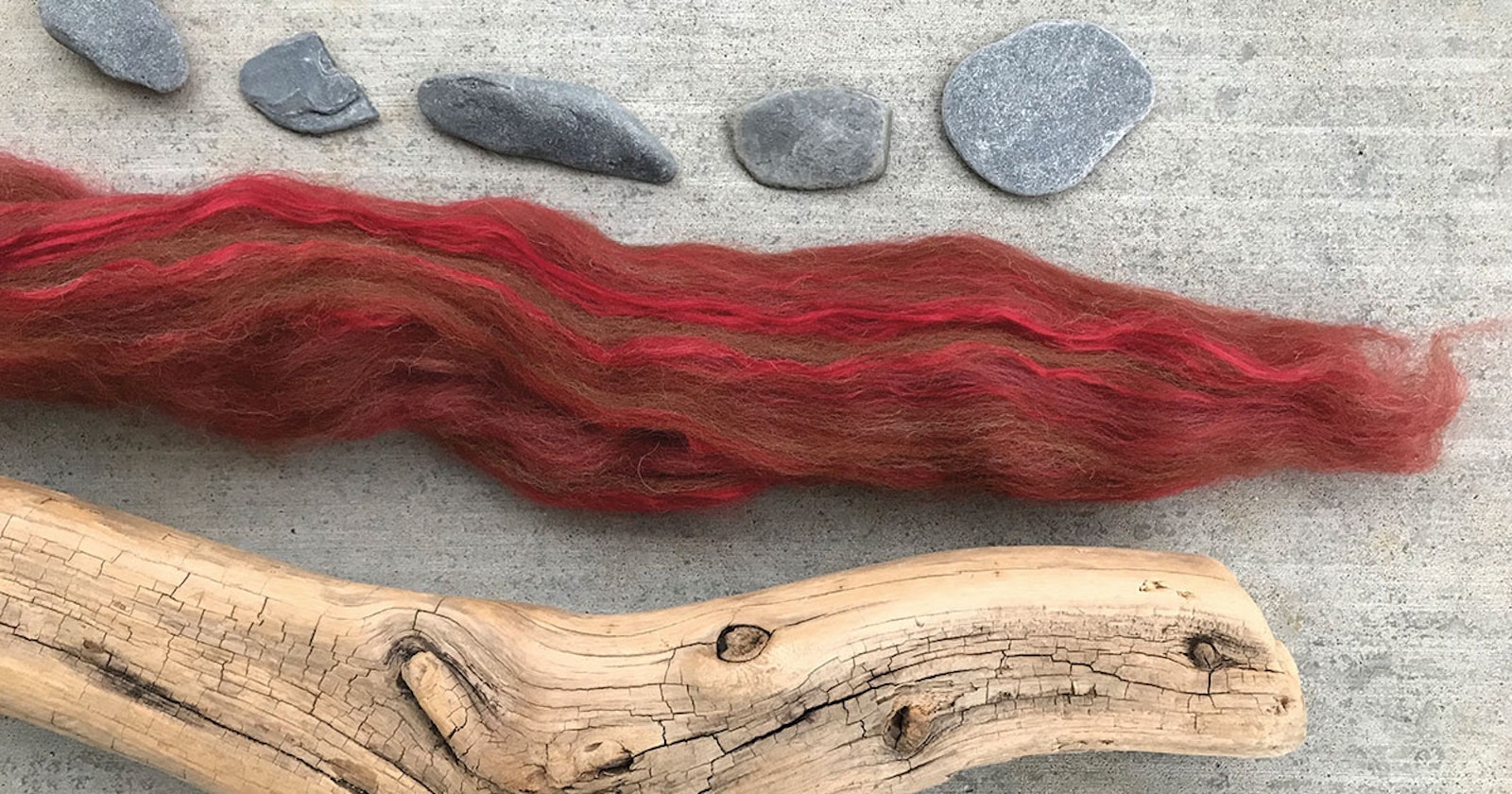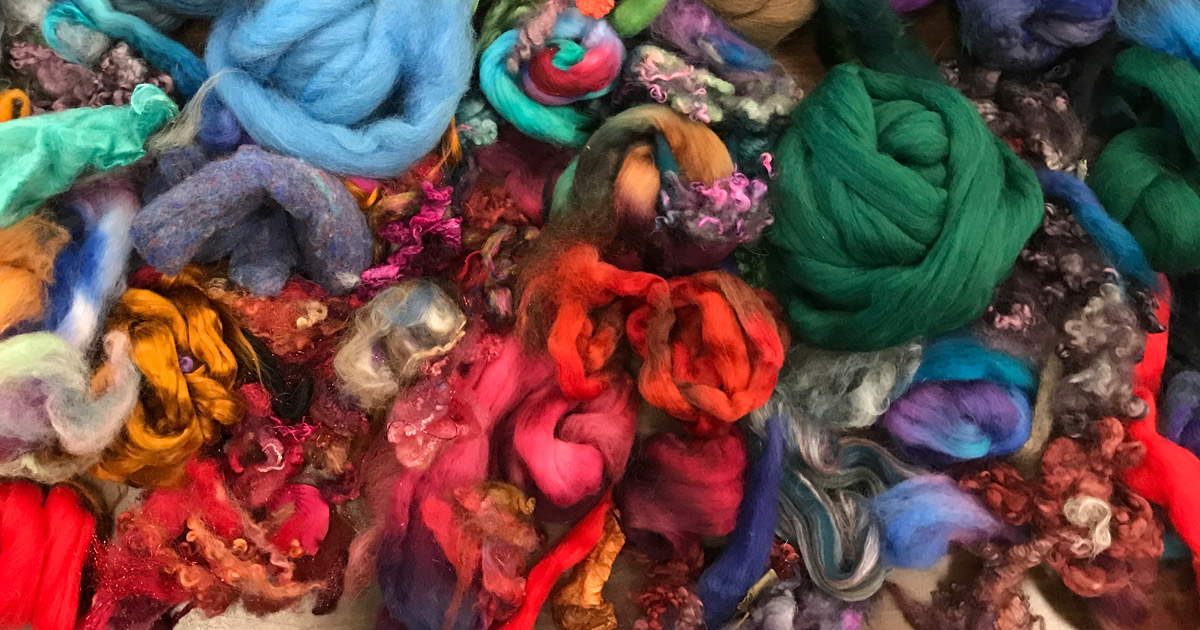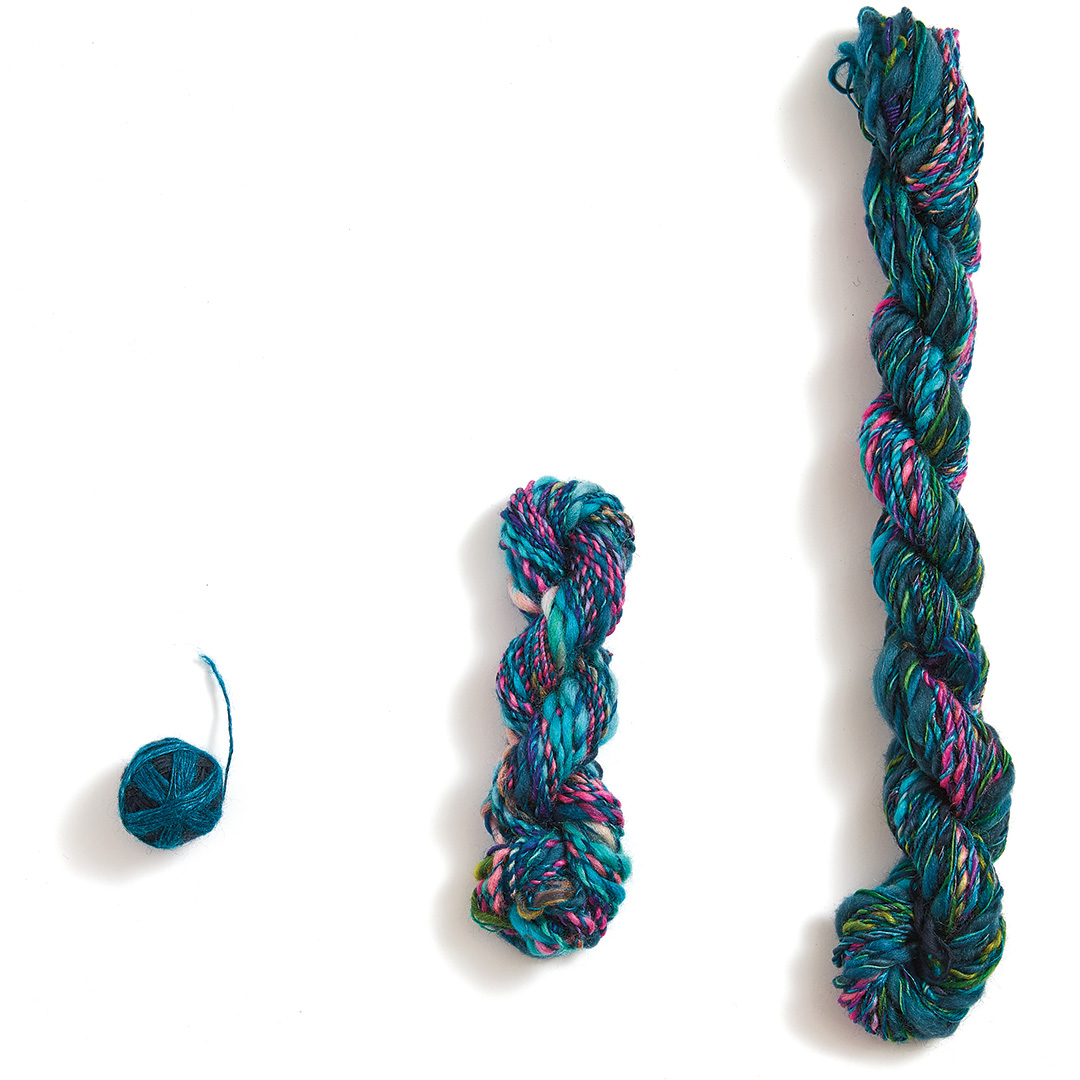Dreaming up projects using handspun yarn is one of the joys of spinning. Many of us buy fiber with a specific yarn in mind, but what about all of the leftover bits of fluff that accumulate in a handspinner’s home? In the Spring 2019 issue ofSpin Off, contributor Judith MacKenzie shares her experience spinning fiber odds and ends for a beach sweater as wild as her beloved Northwest coastline.
Spinning Scrap
Spinning the singles for [my beach sweater] scrap yarn was endlessly fun and absorbing. At first I had rules: use the draw most appropriate for the fiber, at least 5 drafts per scrap, always follow a semiwoolen with a worsted draw, alternate dark and light, rotate between crimpy and smooth fibers. These all seemed like good ways to get a yarn that would be interesting yet have stability and integrity. But soon my rules became guidelines, and after the first 2 or 3 bobbins, I just chose what I wanted and spun it until I wanted to spin something else. The only rule that remained in place was to use the draw that suited the fiber best. The yarn was wonderfully fun to spin, full of texture and memories—that length of plum bison and the lovely bits of Merino, the blend of silk and dog hair, the natural black Shetland from my days working at Gates of the Mountain in Montana—all spun into my new life out here on the coast.
Dive deep into your stash to find coordinating colors and interesting textures to add to your scrap yarn. Photo by Kate Larson
Plying Scrap
Gathering my singles, I prepared to ply the yarn I lovingly refer to as Scrap. Before I started planning my sweater, I had made a 6-inch square sample of Scrap as a 2-ply yarn. It was exactly what I hoped it would be—a stable yarn allowing color and texture to play across the surface of the fabric, with a lovely hand and resiliency. But the yarn was perhaps just a bit too thin for the hardy sweater I had envisioned.
As someone who is fascinated not only with the beauty of fiber but also with the magical physics of yarn, there is no real excuse for what happened next except the well-worn “it seemed like a good idea at the time.”
I made a classic—and dreadful—mistake when I started to ply. I thought that if 2 singles together were good, then 3 would be perfect and eliminate the worry about the yarn being a bit scant for the sweater I was dreaming about. So I made a 3-ply, remembering to mix often and rotate through all my bobbins. The yarn was an amazing color and felt wonderful slipping through my fingers as I plied. . . . The 3-ply leveled the inconsistency in the singles, making the knitted fabric smooth and elegant: a Mercedes rather than a muddy 4Runner. It was a lovely yarn, but not what I wanted for my beach sweater.
Spin samples of 2-ply and 3-ply yarns to see what you like best. Photo by George Boe
Judith’s Tips for Spinning Scrap!
- Grab some leftover fibers in a pleasing palette of colors.
- Spin singles, using an appropriate drafting method for each fiber.
- Make samples of 2-ply and 3-ply yarns to see what you like best.
—Judith MacKenzie
Judith MacKenzie has been spinning and weaving most of her life and has been a textile artist for over 30 years. Judith is a renowned spinner and teacher. She is the author of three books and many video workshops.
Featured Image: Judith MacKenzie found blending the leftover bits of fiber with handcards created a handspun yarn and knitted fabric that was too “predictable and reliable.” Photo by Kate Larson



